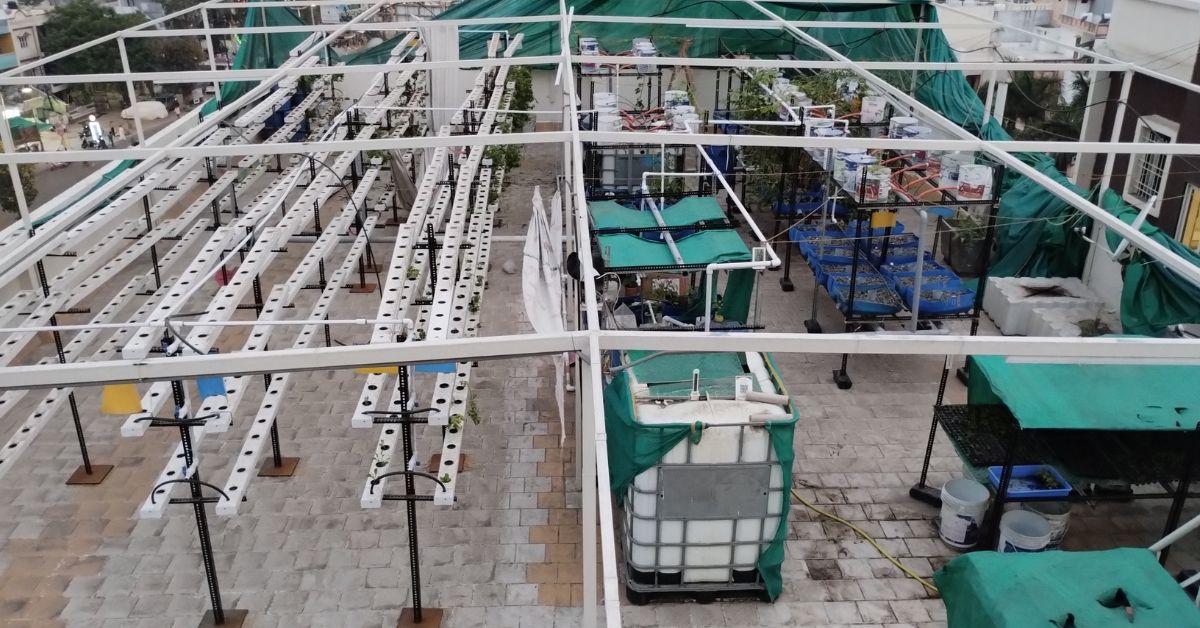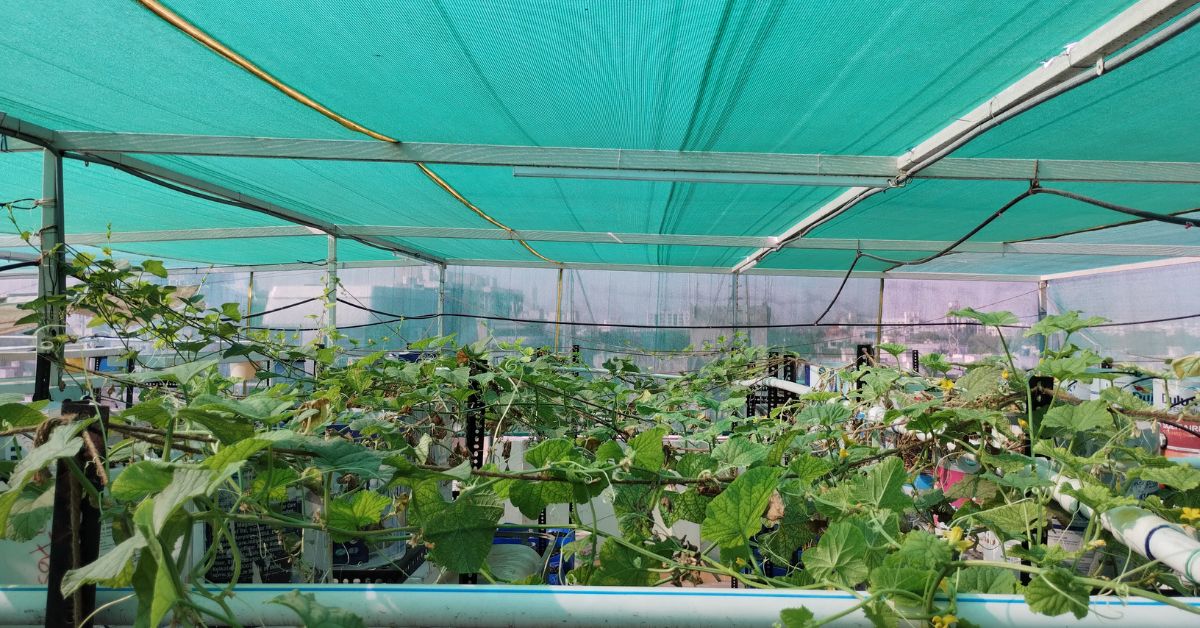Double Your Harvest, Halve Your Water Use: Why Urban Farmers Love Aquaponics & How You Can Start
In a world where land and water are running out, a quiet farming revolution is taking root — right in people’s backyards and terraces. Aquaponics is an innovative farming technique that integrates hydroponics and aquaculture, enabling the simultaneous cultivation of fish and plants using minimal resources.
In this system, plants are grown in water while fish are raised in the same or interconnected systems. The process is self-sustaining: the fish are fed, and their waste provides essential nutrients for the plants, eliminating the need for chemical fertilisers.
This highly organic approach offers the added benefit of dual income, as both fish and plants can be harvested.
This guide offers tips on setting up a commercial aquaponics farm, covering crucial aspects such as setup processes, costs, fertilisation, pH and temperature management, and water conservation.
1. How much space do you need?
According to Kerala-based farmer Vijayakumar Narayanan, an aquaponics farm can be set up on less than 900 sq ft of land. Ideally, half the space should be dedicated to a fish pond and the other half to crops. This setup can support up to two tonnes of fish.
2. What does the setup include?
Incorporate components such as fish tanks, NFT pipes (Nutrient Film Technique), water pumps, and bio-filters. Delhi-based Peter Singh, an aquaponics expert who has built a green oasis to fight air pollution, recommends designing a system where water from the fish tank circulates through plant beds, enriching it with nutrients from fish waste before returning to the tank.
 In this system, plants are grown in water while fish are raised in the same or interconnected systems.
In this system, plants are grown in water while fish are raised in the same or interconnected systems.
“This unit, measuring 2 ft by 6 ft and 6 ft in height, with artificial lighting of 200 watts, uses 250 litres of water and can grow 180 plants. One can grow lettuce, kale, bok choy and other vegetables. One fish tank can sustain five kilograms of fish mass so that you can have 10 freshwater fish weighing half a kilogram each,” Singh explains.
3. Which fish should you start with?
For beginners, farmers advise starting with hardy species like Tilapia or ornamental fish such as goldfish and koi, which produce ample waste to nourish plants. You can keep around 150 fish in a 1,000-litre tank. For edible fish, a 3,000-litre tank is needed to accommodate their growth.
4. What’s the best substrate for plants?
Vijayakumar suggests using quartz silica sand for plant cultivation as it is rich in organic content and more beneficial than river sand. “Two pumps are needed — one for blowing air into the pond and another for pumping water to the sand biofilters where the plants are grown. All these can be bought under subsidies from the horticulture department,” he says. Vijaykumar earns up to Rs 4 lakh per year from this type of farming.
5. How much does it cost to begin?
Setting up a system on 150 sq ft requires an initial investment of around Rs 60,000 to Rs 65,000 for a set-up on 150 sq ft. Bengaluru-based Mamatha Kamireddy, who regularly conducts workshops on soilless farming methods, suggests that a farm of this size can cater to the needs of a family of five.
 This highly organic approach offers the added benefit of dual income, as both fish and plants can be harvested.
This highly organic approach offers the added benefit of dual income, as both fish and plants can be harvested.
Establishing a terrace farm in a vertical configuration costs approximately Rs 800 per sq ft. Avoiding vertical farming can reduce the cost by half — to Rs 400 per sq ft. These expenses typically cover the fish tank, pumps, lighting, and initial stock of fish and plants.
6. Do you need fertilisers?
Aquaponics primarily relies on fish waste, which contains ammonia. This is converted into nitrates by beneficial bacteria, serving as an effective fertiliser for plants.
Vadodara-based Shashank Dubey, an engineer who quit his corporate job to practise terrace aquaponics full-time, explains that in aquaponics, the fish excreta is decomposed by bacteria into nitrate, which is an ideal fertiliser for plants. “Through this fish tank, water is regulated throughout small tanks that hold plants.” Shashank has creatively upcycled drums and cans for use as fish tanks.
Additional inputs like iron nails, lime, and eggshells can be used to supply extra nutrients. “The biggest advantage of this method is that along with growing food without soil in less space, it is also organic. Also, there is no need to fertilise the plants individually,” says Shashank.
7. How to manage pH and temperature?
Vijayakumar says that testing and maintaining the correct pH value of water are crucial before introducing fish to the system. Optimal pH levels help ensure that both fish and plants thrive.
Leafy greens require temperatures between 25-30°C. Strawberries and other hilly crops grow best at 18°C, whereas lettuce thrives at around 15°C. Use urban clay pots for temperature regulation.
8. Does it really save water?
Aquaponics systems recycle water, drastically reducing consumption — by up to 80 percent compared to traditional farming. The system reuses water continuously, with losses occurring only through evaporation.
Edited by Khushi Arora
News